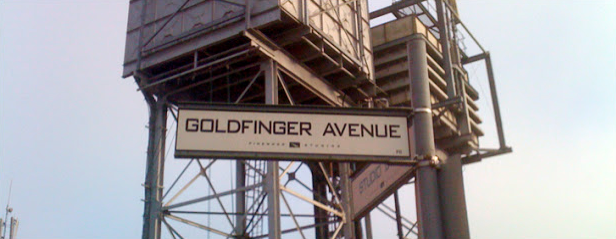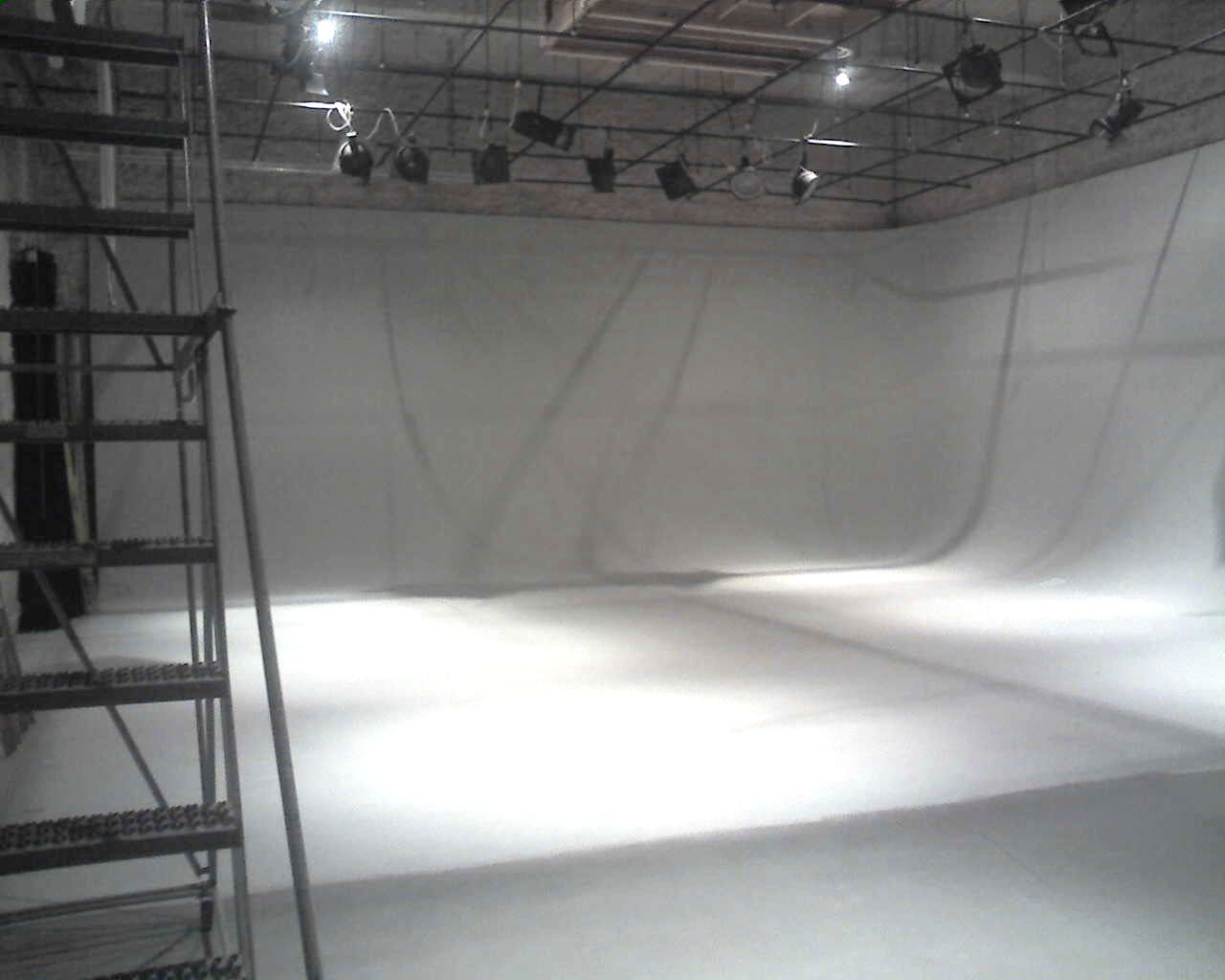|
Film Set
A set is artificially constructed scenery used in theatre, film and TV. In the latter two cases there are many reasons to build or use a set instead of travelling to a real location, such as budget, time, the need to control the environment, or the fact that the place does not exist. Sets are normally constructed on a film studio backlot or sound stage, but any place that has been modified to give the feel of another place is a set. Gallery New_York_Street-1.jpg, New York Street at the former Columbia Ranch Burbank California Scenografia_di_"Rome"_-_panoramio.jpg, link=File:Scenografia_di_%22Rome%22_-_panoramio.jpg, Ancient Rome set at Cinecittà Studios. Coastal_Command-_the_Production_of_a_Ministry_of_Information_Film_at_Pinewood_Studios,_Iver_Heath,_Buckinghamshire,_England,_UK,_March_1942_D7204.jpg, "''Coastal Command'' " a production set on a soundstage at Pinewood Studios, Iver Heath, Buckinghamshire, March 1942 WorldWarZGlasgowOB&SWATVehicles.jpg, Glasgow city centre dres ... [...More Info...] [...Related Items...] OR: [Wikipedia] [Google] [Baidu] |
Columbia Ranch
The Warner Bros. Ranch is located at 411 North Hollywood Way in Burbank, California and was formerly called the Columbia Ranch. It was the backdrop for many Columbia Pictures films and Screen Gems/Columbia Pictures Television shows, including ''Father Knows Best'', ''The Donna Reed Show'', '' Dennis the Menace'', ''Hazel'', ''Bewitched'', ''Gidget'', ''I Dream of Jeannie'', ''The Monkees'', ''The Flying Nun'', ''Here Come the Brides'', ''The Partridge Family'', ''The Hathaways'', ''The Waltons'', ''Lost Horizon'', ''High Noon'', ''Mr. Deeds Goes to Town'', ''You Were Never Lovelier'', ''Lethal Weapon'', ''National Lampoon's Christmas Vacation'', ''WandaVision'', ''The Wild One'', '' The Wrecking Crew'' and '' Autumn Leaves''. Only the front facades of the houses and buildings were built; the interiors were always shot at other locations or studios. The streets were constructed and arranged to allow shooting at multiple angles to create the illusion of a much larger area, though ... [...More Info...] [...Related Items...] OR: [Wikipedia] [Google] [Baidu] |
Set Construction
Set construction is the process undertaken by a construction manager to build full-scale scenery, as specified by a production designer or art director working in collaboration with the director of a production to create a set for a theatrical, film, or television production. The set designer produces a scale model, scale drawings, paint elevations (a scale painting supplied to the scenic painter of each element that requires painting), and research about props, textures, and so on. Scale drawings typically include a groundplan, elevation, and section of the complete set, as well as more detailed drawings of individual scenic elements which, in theatrical productions, may be static, flown, or built onto scenery wagons. Models and paint elevations are frequently hand-produced, though in recent years, many Production Designers and most commercial theatres have begun producing scale drawings with the aid of computer drafting programs such as AutoCAD or Vectorworks. Theater In ... [...More Info...] [...Related Items...] OR: [Wikipedia] [Google] [Baidu] |
Theatrical Scenery
Theatrical scenery is that which is used as a setting for a theatrical production. Scenery may be just about anything, from a single chair to an elaborately re-created street, no matter how large or how small, whether the item was custom-made or is the genuine item, appropriated for theatrical use. History The history of theatrical scenery is as old as the theatre itself, and just as obtuse and tradition bound. What we tend to think of as 'traditional scenery', i.e. two-dimensional canvas-covered 'flats' painted to resemble a three-dimensional surface or vista, is a relatively recent innovation and a significant departure from the more ancient forms of theatrical expression, which tended to rely less on the actual representation of space senerial and more on the conveyance of action and mood. By the Shakespearean era, the occasional painted backdrop or theatrical prop was in evidence, but the show itself was written so as not to rely on such items to convey itself to the audience. ... [...More Info...] [...Related Items...] OR: [Wikipedia] [Google] [Baidu] |
Location Shooting
Location shooting is the shooting of a film or television production in a real-world setting rather than a sound stage or backlot. The location may be interior or exterior. The filming location may be the same in which the story is set (for example, scenes in the film ''The Interpreter'' were set and shot inside the United Nations Headquarters in Manhattan), or it may stand in for a different locale (the films ''Amadeus'' and '' The Illusionist'' were primarily set in Vienna, but were filmed in Prague). Most films feature a combination of location and studio shoots; often, interior scenes will be shot on a soundstage while exterior scenes will be shot on location. Second unit photography is not generally considered a location shoot. Before filming, the locations are generally surveyed in pre-production, a process known as location scouting and recce. Pros and cons Location shooting has several advantages over filming on a studio set. First and foremost, the expense can often ... [...More Info...] [...Related Items...] OR: [Wikipedia] [Google] [Baidu] |
Glasgow
Glasgow ( ; sco, Glesca or ; gd, Glaschu ) is the most populous city in Scotland and the fourth-most populous city in the United Kingdom, as well as being the 27th largest city by population in Europe. In 2020, it had an estimated population of 635,640. Straddling the border between historic Lanarkshire and Renfrewshire, the city now forms the Glasgow City Council area, one of the 32 council areas of Scotland, and is governed by Glasgow City Council. It is situated on the River Clyde in the country's West Central Lowlands. Glasgow has the largest economy in Scotland and the third-highest GDP per capita of any city in the UK. Glasgow's major cultural institutions – the Burrell Collection, Kelvingrove Art Gallery and Museum, the Royal Conservatoire of Scotland, the Royal Scottish National Orchestra, Scottish Ballet and Scottish Opera – enjoy international reputations. The city was the European Capital of Culture in 1990 and is notable for its architecture, cult ... [...More Info...] [...Related Items...] OR: [Wikipedia] [Google] [Baidu] |
Pinewood Studios
Pinewood Studios is a British film and television studio located in the village of Iver Heath, England. It is approximately west of central London. The studio has been the base for many productions over the years from large-scale films to television programmes, commercials, and pop promos. It is well known as the home of the ''James Bond'' and ''Carry On'' film franchises. History Pinewood Studios was built on the estate of Heatherden Hall, a large Victorian country house which was purchased by Canadian financier, and Member of Parliament (MP) for Brentford and Chiswick, Lt. Col. Grant Morden (1880–1932). He added refinements such as a ballroom, a Turkish bath and an indoor squash court. Due to its seclusion, it was used as a discreet meeting place for high-ranking politicians and diplomats; the agreement to create the Anglo-Irish Treaty was signed there. In 1934, building tycoon Charles Boot (1874–1945) bought the land and turned it into a country club. The ballroom ... [...More Info...] [...Related Items...] OR: [Wikipedia] [Google] [Baidu] |
Cinecittà
Cinecittà Studios (; Italian for Cinema City Studios), is a large film studio in Rome, Italy. With an area of 400,000 square metres (99 acres), it is the largest film studio in Europe, and is considered the hub of Italian cinema. The studios were constructed during the Fascist era as part of a plan to revive the Italian film industry. Filmmakers such as Federico Fellini, Roberto Rossellini, Luchino Visconti, Sergio Leone, Bernardo Bertolucci, Francis Ford Coppola, Martin Scorsese, and Mel Gibson have worked at Cinecittà. More than 3,000 movies have been filmed there, of which 90 received an Academy Award nomination and 47 of these won it. In the 1950s, the number of international productions being made there led to Rome being dubbed "Hollywood on the Tiber." History The studios were founded in 1937 by Benito Mussolini, his son Vittorio, and his head of cinema Luigi Freddi under the slogan "''Il cinema è l'arma più forte''" ("Cinema is the most powerful weapon"). The pu ... [...More Info...] [...Related Items...] OR: [Wikipedia] [Google] [Baidu] |
Sound Stage
A sound stage (also written soundstage) is a soundproof, large structure, building, or room with large doors and high ceilings, used for the production of theatrical film-making and television productions, usually located on a secured movie or television studio property. Compared to a silent stage, a sound stage is sound-proofed so that sound can be recorded along with the images. The recordings are known as ''production sound''. A silent stage is not soundproofed and is susceptible to outside noise interference; therefore, sound is not generally recorded. Because most sound in movies, other than dialogue, is added in post-production, this generally means that the main difference between the two is that sound stages are used for dialogue scenes, but silent stages are not. An alternative to production sound is to record additional dialogue during post-production (known as dubbing). Early history Structures of this type were in use in the motion picture industry before the adv ... [...More Info...] [...Related Items...] OR: [Wikipedia] [Google] [Baidu] |
Scenery
Theatrical scenery is that which is used as a setting for a theatrical production. Scenery may be just about anything, from a single chair to an elaborately re-created street, no matter how large or how small, whether the item was custom-made or is the genuine item, appropriated for theatrical use. History The history of theatrical scenery is as old as the theatre itself, and just as obtuse and tradition bound. What we tend to think of as 'traditional scenery', i.e. two-dimensional canvas-covered 'flats' painted to resemble a three-dimensional surface or vista, is a relatively recent innovation and a significant departure from the more ancient forms of theatrical expression, which tended to rely less on the actual representation of space senerial and more on the conveyance of action and mood. By the Shakespearean era, the occasional painted backdrop or theatrical prop was in evidence, but the show itself was written so as not to rely on such items to convey itself to the audience. ... [...More Info...] [...Related Items...] OR: [Wikipedia] [Google] [Baidu] |
Backlot
A backlot is an area behind or adjoining a movie studio containing permanent exterior buildings for outdoor scenes in filmmaking or television productions, or space for temporary set construction. Uses Some movie studios build a wide variety of sets on the backlot, which can be modified for different purposes as need requires and "dressed" to resemble any time period or look. These sets include everything from mountains, forests, ships, to small-town settings from around the world, as well as streets from the Old West, to whole modern-day city blocks from New York City, Paris, Berlin, and London. There are streets that comprise an assortment of architectural styles, Victorian architecture, Victorian to suburban homes, and 19th century-style townhouses that encircle a central park with trees. An example of this is (the former) Warner Bros. Ranch in Burbank, California seen in the title sequence of ''Friends'' or, in the case of Universal Studios, the home of Norman Bates from the ... [...More Info...] [...Related Items...] OR: [Wikipedia] [Google] [Baidu] |
Film Studio
A film studio (also known as movie studio or simply studio) is a major entertainment company or motion picture company that has its own privately owned studio facility or facilities that are used to make films, which is handled by the production company. Most firms in the entertainment industry have never owned their own studios, but have rented space from other companies. There are also independently owned studio facilities, who have never produced a motion picture of their own because they are not entertainment companies or motion picture companies; they are companies who sell only studio space. Beginnings In 1893, Thomas Edison built the first movie studio in the United States when he constructed the Black Maria, a tarpaper-covered structure near his laboratories in West Orange, New Jersey, and asked circus, vaudeville, and dramatic actors to perform for the camera. He distributed these movies at vaudeville theaters, penny arcades, wax museums, and fairgrounds. The first ... [...More Info...] [...Related Items...] OR: [Wikipedia] [Google] [Baidu] |








